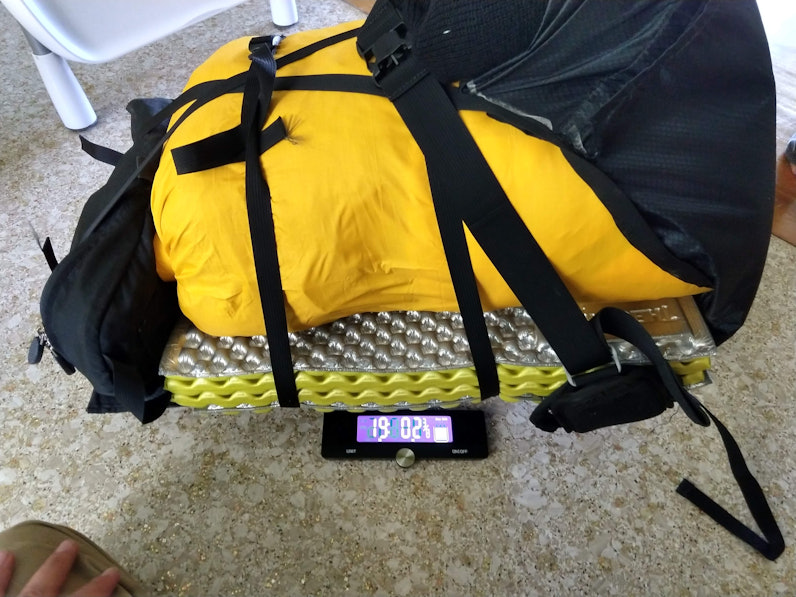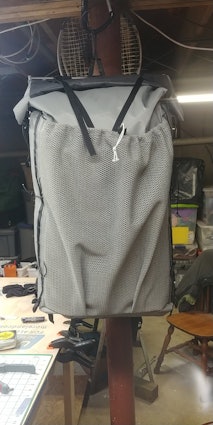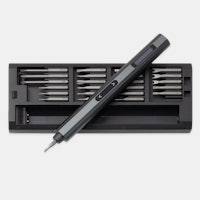Click to view our Accessibility Statement or contact us with accessibility-related questions






Why I'm Going Back to an External Frame Backpack
I began backpacking when I was a scout, lugging around a bargain, classic external frame pack that my parent's found on a closeout deal at a local gear shop. It wasn't pretty, or terribly comfortable, but it held my stuff, and what it didn't - easily lashed on the outside.
For two years, I hoisted that thing around and when I was 16, and was working my first job, I saved and scrapped all of my money until I had enough to buy an internal frame pack. Back then, outdoor gear was beefy, made from 1000 denier, kevlar; my new backpack was made to last a lifetime! It even came with a lifetime warranty. And the weight... well, lets just say that pack alone was more than half the weight people are bragging about these days as their BASE WEIGHT.
At first it was hard to justify a replacement backpack. I mean... it worked, albeit a bit heavy, and it was near bulletproof. But as my gear got smaller, and lighter... and after packing a full size pillow for a year or so, to fill the extra space in the pack because it could only cinch down so far, I rationalized that this tried and true piece of gear was due for an upgrade. I soon traded in my Vortex 6800 cubic inch (110 liters), 8+ pound internal frame pack for a 55 liter, 4+ pound pack.
I used that Arc'teryx pack for almost a decade and then last year, on a whim while looking at my 30 liter day/overnight Gregory pack, decided to make it my goal to fit everything I needed for a 4 day trip to the High Uintah Wilderness inside. It wasn't easy, to get it all crammed inside, and for good reason. While the pack was able to handle the meager 23 pounds I stashed inside, it simply wasn't designed to compress the sheer bulk of the insulating gear I needed for the high elevation. Those pressures stressed the lightweight load bearing systems and, while it felt great to have such a featherweight load on my back, it just didn't transfer well. I could feel the pack being pushed awkwardly into my back, pulling on my shoulders and not transferring well to my hips to bear the weight.
When I got home, I knew that the experiment was a bust. Moreover, I had pushed the limit of this pack and I knew that it would never work for longer trips. But, again, my gear was all smaller and didn't fill up 55 liters. So, I began to look for another solution. That's when I found the Vargo ExoTi packs. I contacted them and they sent me a frame so that I could DIY my own pack to go on it. My addition to the pairing was crude, to say the least, but it did the job for the three day trip I tested it on. Moreover I was carrying the same weight at before, but it felt much lighter. I attribute this to the superior ability for external frame packs to transfer weight. I ended up lashing things pretty tight and snug, like I would for an internal frame pack, and this lent itself for a very stable platform, enabling me to scramble over boulders and down steep switchbacks. I couldn't believe how comfortable and breathable it was! From then on, I've been sold on the idea of ultralight backpacking with an external frame.
Now, I know that some of you out there are shaking your heads, thinking "he'll never be able to get his base weight down under 10 pounds if his backpack is 40 ounces." That may be true, but what I've learned is that a backpack is going to be one of those things that I look to evaluating it's comfort and pack-ability, before I discard it solely because of it's extra weight.
As I get older, I value a nice inflatable pad, over the few ounces I'd surely save by carrying a zRest. That makes sense when you consider how much time you spend sleeping and how important getting rest is. I'd argue that just as important, if not more, is a good backpack that will distribute the weight well, to reduce trail fatigue and soreness. And where I spend my time, in the high mountain deserts of Utah, I have to make sure that my pack is large enough to accommodate the gear I need to survive the fluctuating temperatures.
For me, at least for now, this new frame system from Vargo fits the bill perfectly. Though, I can't comment on their pack portions, since I don't have one and have never used one, because I made my own. As far as the frame, itself, I was shocked at how well it worked, and kind of came to the realization that it's time again to relook at a technology that I happily discarded 25 years ago. Best of all, I've got the winter to sort out my system and get it perfected and ready for another round of testing in the Spring!


(Edited)

search
close
Sort by: Newest
keyboard_arrow_downSevenseventy
3
Dec 16, 2019
I hammock camp in a medium light way. I tend to split my gear between the ultra light (dutchware hammock system, stoves and rations, etc) and the luxuriously heavy (crafting tools, photography equipment, cooking supplies.)
It was easy to account for the smidge of extra weight that comes with an external frame. With it, its so much easier to pack and bear awkward, heavy, specialized equipment. Don't miss my internal frame at all
Carpenter
3
Dec 12, 2019
My story is far too similar. The old school external frame packs for decades when I was younger. I then switched to internal and frameless packs depending on the hike. I hated the the lumps and the loads hanging off my shoulders. I then switched back too modern external frames such as the osprey exos and Zpacks. A year ago I win a Vargo pack in a giveaway. I immediately made a modern 40 liter X-Pac bag for the frame and haven't looked back. I'll be carrying it for my second AT thruhike this spring.
Carpenter
3
Dec 12, 2019
CarpenterI tried to upload several views but in the end it looks like it chooses one at a time.
PRODUCTS YOU MAY LIKE
Trending Posts in More Community Picks

Graham88
Completely surprised by the lack of blade diversity here on Drop...
I’ve been a collector of Blades since before my teens, and a retailer coming up on 15… or maybe 20 years. Drop has really been kind of an interesting experience for me, because I do occasionally get to see some unusual tech and sometimes EDC items that otherwise I might not have been aware of. And maybe it’s because I have a deep love of cutlery and bladed weapons, but I find myself trolling through the site looking at it what’s available; and it’s just it’s pretty much the same. And the bladed community here is just always confused me.. every single knife is about the same, they’re almost all drop points and although the handle materials change and brands change.. it’s really just the same knife over and over and over again... occasionally you’ll see a tanto or a slight variant; but rarely… and almost never a serrated blade. And I’m just deeply amazed at this diversion of serrated blades. And I’m just surprised there isn’t more of a request for diversity here.... and I...
Mar 12, 2020
JellyDPhoto
Can we get Sony E-Mount or other mirrorless camera options please..
Would be nice to see some Sony E mount full frame cameras on here. I currently shoot with a A99 and they killed the lense path for better or more option lenses and now is all E-Mount. 🤔
Jan 13, 2020
RayF
There Are Pandas, and Then There Are Pandas.
And this isn't either of them! The Pandas we're talking about here, are watches, not bears. And what got me thinking about them (again) was a link posted this morning by @cm.rook who pointed a few of us to the very attractive (and not terribly priced) Yema "Rallygraph" Panda which, in it's most traditional arrangement, looks like the one on the left, but can also be had in the version on the right: The model on the left is a true Panda, while the model on the right is called a reverse Panda. The reason for that distinction is clear--Panda bears, only come in the first arrangement. Now at this point, everyone should be thinking about the most well-know Panda, The Rolex Panda, which is actually a Daytona, and among Rolex Daytonas, the most famous of which is the Paul Newman Daytona, which was famous first, because it was Paul's, and second because it sold at auction for $17.8 million (US Dollars). The story of that auction is well-known so I'll only...
Nov 8, 2019





